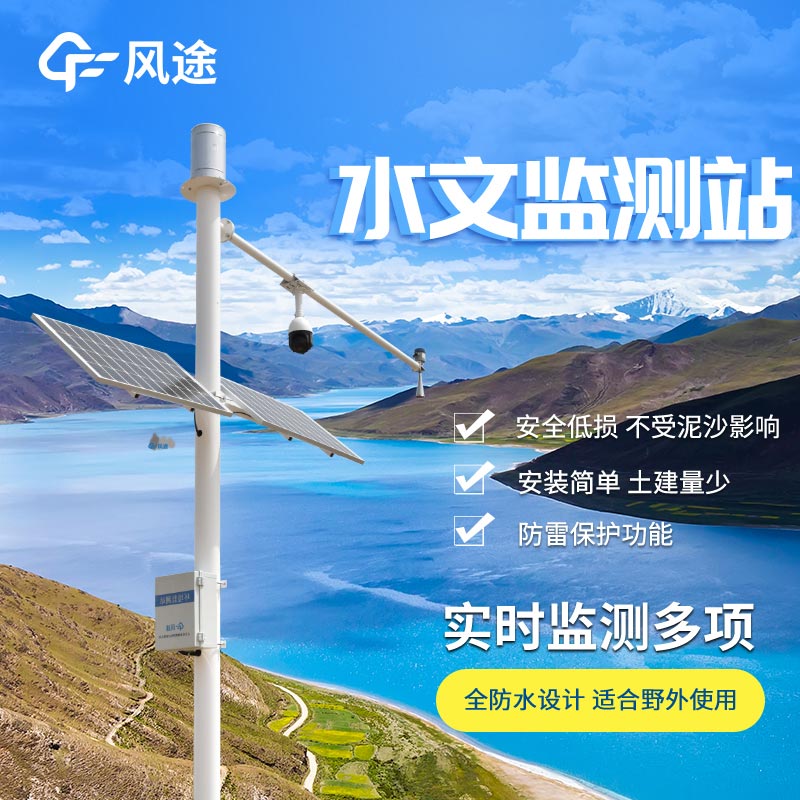Tianyi Sensor IOT Technology Co., Ltd
Sales Manager:Ms. Emily Wang
Cel,Whatsapp,Wechat:+86 15898932201
Email:info@fengtutec.com
Add:No. 155 Optoelectronic Industry Accelerator, Gaoxin District, Weifang, Shandong, China

Sales Manager:Ms. Emily Wang
Cel,Whatsapp,Wechat:+86 15898932201
Email:info@fengtutec.com
Add:No. 155 Optoelectronic Industry Accelerator, Gaoxin District, Weifang, Shandong, China
time:2025-06-10 10:13:00 source:Weather Station viewed:183 time
Hydrological flow monitoring equipment plays a crucial role in water conservancy work, helping us grasp the dynamics of water resources and facilitating flood control, water dispatch, and other tasks. Below is a detailed introduction to common equipment.
Water Level Monitoring Station
The battery-powered staff gauge is a basic device. Installed along riverbanks or canal edges and powered by batteries, it can operate stably for extended periods. It features a scale like a ruler inserted into the water, allowing staff to read water levels at regular intervals to understand changes. However, manual reading is inevitably affected by weather and transportation conditions, resulting in poor data timeliness.
Radar Water Level Gauge
This is a far more advanced device. Using radar technology, it emits electromagnetic waves that reflect off the water surface. By measuring the round-trip time of the waves, it calculates water level height rapidly, providing real-time data. As a non-contact device, it is immune to water flow impact and sediment interference, adapting to various environments with high data accuracy. It is widely used in major rivers and key reservoirs.
Doppler Current Velocity Meter (for Flow Measurement)
This device relies on the Doppler effect. It emits ultrasonic waves into the water flow, and the waves are reflected back by impurities and bubbles in the water. The frequency of the reflected waves changes with the flow velocity, allowing the instrument to calculate velocity based on this change. Easy to use and non-contact, it has a wide velocity measurement range, suitable for various water bodies. By combining velocity with the cross-sectional area of water flow, it calculates flow rate, making it an essential tool for many monitoring stations.
These devices are widely applied in daily monitoring and emergency responses by water conservancy departments, providing critical data support for practical tasks such as reservoir dispatch, flood early warning, and water pollution control. They serve as powerful assistants for the scientific management of water resources.

Traditional flow measurement involves trekking through mountains and rivers, enduring sun and rain, while modern technology can achieve fully automatic monitoring with just one device.River flow measurement is a crucial part of water conservancy work, directly related to flood control, drought relie...
In today's society, environmental issues are receiving increasing attention, and air quality has become an important factor affecting people's quality of life. As one of the key pollutants impacting air quality, dust is in urgent need of accurate monitoring and effective control. The Dust De...
The micro weather sensor is a new-type device designed to meet meteorological monitoring needs across various industries and scenarios. It integrates the attributes of integration, miniaturization and multi-functionality. Inheriting the advantages of high precision, high stability and easy installat...
The Series power supply supporting UAV inspection is a special supporting equipment for UAV inspection of photovoltaic power plants, also known as Series power supply or UAV string power supply. Its core function is to convert alternating current into direct current and input it into the battery pan...